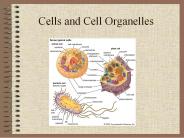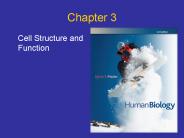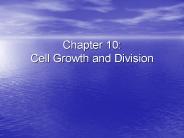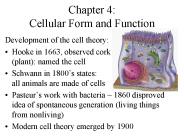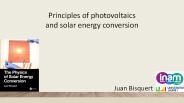Organic Soalr Cell PowerPoint PPT Presentations
All Time
Recommended
Cell PEOPLE, Cell Size, and Cell Specialization Chap 7-1 http://www.parlament-berlin.de/Galeriecopy.nsf/0/8ABC720262898739C1256A480037F869?OpenDocumen
| PowerPoint PPT presentation | free to view
Cell Membrane, Cell Transport & Cell Division Chapter 7: Membrane Structure and Function Chapter 12: The Cell Cycle Plasma Membrane Plasma Membrane ...
| PowerPoint PPT presentation | free to download
... not living like the cell membrane ... worn out cell parts ... Arial Calibri Notebook 1_Notebook Cells and Cell Organelles History PowerPoint ...
| PowerPoint PPT presentation | free to view
The Way Cells Are Organized By: Hanna and Sami and Sarah How Are Cells Organized??? Some cells are organized by what they do. Some cells are organized by structure.
| PowerPoint PPT presentation | free to view
Cell Division Occurs in All Organisms Science Miss Curd s Class Cell Division is involved in many functions Unicellular organisms reproduce through cell division ...
| PowerPoint PPT presentation | free to view
This Report provided by GrandResearchStore is about , sales (consumption) of Organic Solar Cells in United States market, focuses on the top players, with sales, price, revenue and market share for each player, covering Slovy Dyesol Heliatek Mitsubishi G24 Sigma-Aldrich Infinity PV
| PowerPoint PPT presentation | free to download
Plant cells take in carbon dioxide and water and use the energy from sunlight to ... Draw a diagram of, and label how a cell shrinks when put into salt water. ...
| PowerPoint PPT presentation | free to view
This article mainly introduces the research status of organic photovoltaic cells. Visit https://www.alfa-chemistry.com/products/organic-photovoltaic-opv-137.htm for more information.
| PowerPoint PPT presentation | free to download
Title: Lesson 2:Energy in Cells, Comparing Organisms, Prokaryotes, Eukaryotes & Viruses and Living Things Biology EOCT Review Author: Bibb BOE Last modified by
| PowerPoint PPT presentation | free to view
All Organisms Are Made of Cells All living things are composed of cells Cells are the basic unit of structure and function in living things All cells come from pre ...
| PowerPoint PPT presentation | free to view
Higher Biology Cells Mr G Davidson Unicellular Organisms Unicellular organisms consist of only one cell and include animals and plants. In order to survive, these ...
| PowerPoint PPT presentation | free to view
Drawings should show cells and cell ultrastructure with scale bars eg. Magnification could also be stated, eg 250. Author: ITS Last modified by: ITS ...
| PowerPoint PPT presentation | free to download
Cells What are they? Levels of living things Living Levels: CELL (makes up ALL organisms) TISSUE (cells working together ORGAN (heart, brain, stomach )
| PowerPoint PPT presentation | free to download
Cells Movement Across the Cell Membrane Sometimes, cells must move substances in the opposite direction of diffusion against the concentration gradient To move ...
| PowerPoint PPT presentation | free to view
Cell Division What is the function of cell division? Unicellular organisms use cell division as a way to reproduce. Multicellular organisms use cell division in ...
| PowerPoint PPT presentation | free to download
The Cell 7th Grade Science Mrs. Christopherson Mrs. Goede History of Cells 1665: Robert Hooke used a compound microscope to look at cork. 1674: Anton von Leeuwenhoek ...
| PowerPoint PPT presentation | free to view
Cell Differentiation & Organization of the Human Body Ch 10.4 & 30.1 (M)
| PowerPoint PPT presentation | free to view
Introduction to Cells Unit 4 Unicellular or multicellular Leaf Cells Eukaryotic or prokaryotic? Unicellular or multicellular Protists Eukaryotic or prokaryotic?
| PowerPoint PPT presentation | free to view
How do cells reproduce? Cell division is at the heart of reproduction Multicellular organisms originate from a rapidly dividing fertilized egg (cell); eggs and sperm ...
| PowerPoint PPT presentation | free to view
Introduction to the Cell Chapter 7.1 Introduction to the Cell Cell- smallest unit of matter that can carry on all of the processes of life Hooke and Leeuwenhoek used ...
| PowerPoint PPT presentation | free to view
Cells: History, Structure, and Function
| PowerPoint PPT presentation | free to download
Chapter 3 Cell Structure and Function What does the cell theory tell us? A cell is the basic unit of life All living things are made up of cells New cells arise from ...
| PowerPoint PPT presentation | free to view
Cells as Units of Life Chapter 3
| PowerPoint PPT presentation | free to download
Microbial fuel cell powered by organic household waste Produces 8x as much energy as similar fuel cells and no waste Estimated cost - $15 By 2005, ...
| PowerPoint PPT presentation | free to view
Stem Cell Therapy Most stem cell therapies are in the ... different cells express different subsets of genes Somatic cells Germ line cells Totipotency Capability of ...
| PowerPoint PPT presentation | free to view
All cells contain ribosomes for building proteins. ... The mitochondria are often called the power plant of the cell. Final test Home Sommario Home Sommario H ...
| PowerPoint PPT presentation | free to download
7.4 Homeostasis and Cells Cells have the same basic composition, and the same kinds of organelles, but not all living things are the same Cells are specialized and ...
| PowerPoint PPT presentation | free to view
Cells and Heredity PROPHASE METAPHASE Bell Work 9/21/11 What are the three stages of the cell cycle? (please list them in order) What are the first two stages of mitosis?
| PowerPoint PPT presentation | free to view
Chapter 10: Cell Growth and Division * Cells that contain both sets of homologous chromosomes are called diploid. All of your cells except the sex cells (sperm and ...
| PowerPoint PPT presentation | free to download
The Nature Of Cells Cells: The Smallest Unit Of Life Robert Hooke first saw cells in 1665 using an early microscope. Anton van Leeuwenhoek discovered living things in ...
| PowerPoint PPT presentation | free to view
... Natural Killer cells and macrophages Remaining cells can respond to secondary exposure Cytotoxic T cell binds to antigen on plasma membrane of target cells ...
| PowerPoint PPT presentation | free to download
Chapter 2 Structure and function of cells Plasma membrane Movement (diffusion/Osmosis) Surface area to volume ratio Organelles Tissues/Organs * * Cell wall The cell ...
| PowerPoint PPT presentation | free to view
Chapter 2 Cells and Organs of the Immune System Sept 26,28 & Oct 3, 2006 All DCs constitutively express high levels of class I & class II MHC molecules, costimulatory ...
| PowerPoint PPT presentation | free to download
Cell Division Mitosis and Meiosis Prophase II Chromosome condense within haploid cell condense, and the spindle attaches to the kinetochore of each chromosome.
| PowerPoint PPT presentation | free to view
Roots, stems, and leaves are organs of a plant. A leaf is an organ that makes food for the plant. The roots of a plant are the main organ in the root system of a plant.
| PowerPoint PPT presentation | free to download
Cell Jeopardy Directions In Jeopardy, remember the answer is in the form of a question. Select a question by clicking on it. After reading the question click on the ...
| PowerPoint PPT presentation | free to view
Cell Jeopardy Directions In Jeopardy, remember the answer is in the form of a question. Select a question by clicking on it. After reading the question click on the ...
| PowerPoint PPT presentation | free to view
Cell Structure and Function Textbook Sections 7.1 and 7.3 These cells are Neurons Vesicles Pinch off from the Golgi Apparatus Transportation bubble for proteins and ...
| PowerPoint PPT presentation | free to view
Cells: The Basic Units of Life Chapter 3 Preview Section 1 The Diversity of Cells Section 2 Eukaryotic Cells Section 3 The Organization of Living Things
| PowerPoint PPT presentation | free to download
Chapter 3 Lesson 2 How do unicellular and multicellular organisms differ? How does cell differentiation lead to the organization within a multicellular organism?
| PowerPoint PPT presentation | free to download
i. Cell membrane grows across the center between the two nuclei ... iii. In animal cells, the plasma membrane pinches in along the equator of the cell ...
| PowerPoint PPT presentation | free to view
JANUARY 31, 2000 .Stem Cell Research Act of 2000. AUGUST 25, 2000 .NIH Guidelines for Research Using Human Pluripotent Stem Cells, ...
| PowerPoint PPT presentation | free to view
A Tour of the Cells * * The cell wall, found in prokaryotes, fungi, and some protists, has multiple functions. In plants, the cell wall protects the cell, maintains ...
| PowerPoint PPT presentation | free to view
Functional Anatomy of the Prokaryotic Cell Prokaryote means, before the nucleus . Prokaryotic cells are simpler cells than eukaryotes, but they are still able to ...
| PowerPoint PPT presentation | free to download
Development of the cell theory: Hooke in 1663, observed cork (plant): named the cell ... such as the cell ultrastructure of the cytoplasm fibers, ...
| PowerPoint PPT presentation | free to view
A Tour of the Cell Definition of a cell Types of cells based on membrane complexity How cells are studied Organelles of the eukaryotic cell
| PowerPoint PPT presentation | free to view
List and tell the function of the parts of a cell. Prokaryotic cell wall protection and structure cell membrane controls what comes in and what goes out
| PowerPoint PPT presentation | free to download
ALL ABOUT CELLS A Short History Lesson Robert Hooke (1665) first discovered cells - cork Schwann and Schleiden (1838) first hypothesized that all organisms are ...
| PowerPoint PPT presentation | free to download
The cytoplasm consists of cytosol and the cellular organelles, except the nucleus. ... The cytoplasm plays an important role in a cell, serving as a 'molecular soup' ...
| PowerPoint PPT presentation | free to view
3.1 The Cellular Level of Organization All life is cellular Unicellular organisms like Archaea, Bacteria, protists Multicellular eukaryotes like fungi, plants ...
| PowerPoint PPT presentation | free to download
Chapter 3: The Cellular Level of Organization * * Stage 2: Metaphase Chromosomes align in a central plane (metaphase plate) Figure 3 25 (Stage 2) * Stage 3 ...
| PowerPoint PPT presentation | free to view
Chapter 4: The Tissue Level of Organization SUMMARY The fasciae (superficial, deep and subserous) The 3 types of muscle tissues (skeletal, cardiac, and smooth) The ...
| PowerPoint PPT presentation | free to view
Other nodules: components of lymphoid organs (tonsil, lymph node, spleen) = structural unit ... Location: median doral wall of nasopharynx. Series of ...
| PowerPoint PPT presentation | free to view
This talk is based on the book Physics of Solar Energy Conversion that introduces the main physico-chemical principles that govern the operation of energy devices for energy conversion and storage, with a detailed view of the principles of solar energy conversion using advanced materials. See it in YouTube: https://youtu.be/_7Gbewp0kZA
| PowerPoint PPT presentation | free to download
5 Levels of Organization Pages 524-525 Organ Systems Respiratory system facts: You breathe in 21% oxygen and .4% Carbon dioxide, you breathe out 16% oxygen and 4% ...
| PowerPoint PPT presentation | free to view
This report studies Flexible Organic Photovoltaic Cell in Global market, especially in North America, China, Europe, Southeast Asia, Japan and India, with production, revenue, consumption, import and export in these regions, from 2012 to 2016, and forecast to 2022.



